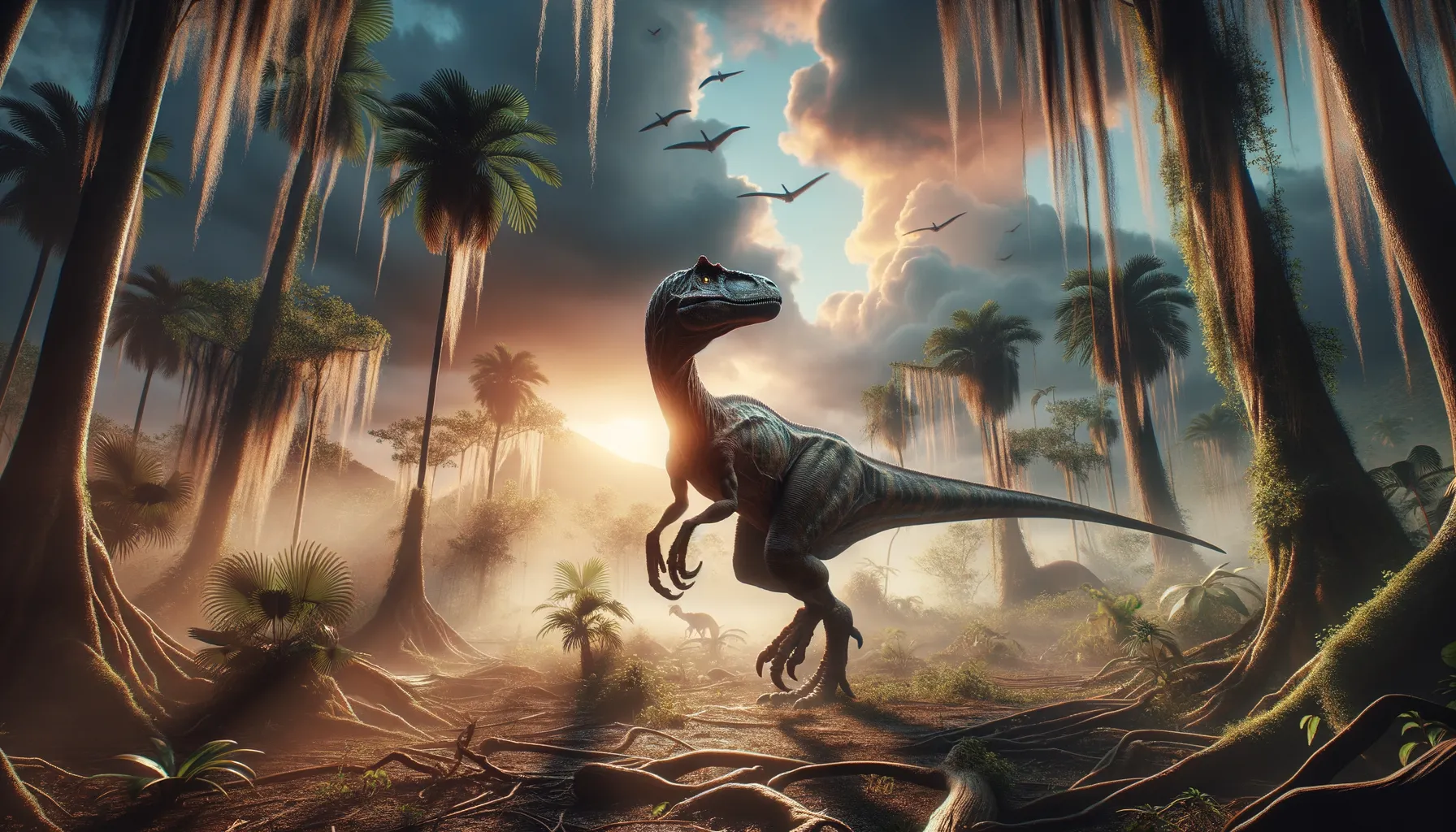
Borogovia
A speedy predator of the ancient terrain.
Period
Cretaceous
Length
Measured about 2 meters in length.
Height
Stood roughly 1 meter tall at the hip.
Weight
Estimated to weigh around 20 kilograms.
Borogovia was a small, nimble theropod dinosaur from the Cretaceous period. Known from limited fossil evidence found in Mongolia, this dinosaur is believed to have been a swift predator with a build similar to the famous Velociraptor, but on a much smaller scale. Its long legs suggest that it was fast and agile, possibly feeding on small prey. Though not much is known about Borogovia, it offers insight into the diversity of life that once thrived in prehistoric ecosystems.
Diet
Borogovia was likely a carnivore, feeding on small prey such as insects, lizards, and possibly small mammals or other reptiles. Its diet would have depended on its ability to capture and consume fast-moving creatures.
Hunting
Hunting would have relied on stealth and speed, given its small size and light weight. It might have used its agility to chase down lesser creatures or sneak up on them silently.
Environmental challenges
Living in the late Cretaceous period, Borogovia would have faced challenges such as fluctuating climates and competition for resources. The presence of larger predators would have also been a danger. Its adaptability and speed may have helped it survive in a dynamic environment. The ability to find food in diverse ecosystems would have been crucial to its survival.
Speed
Borogovia was likely a fast runner.
Lifespan
Lifespan could have been around 10 to 20 years.
First discovery
Discovered in Mongolia in the 1970s.
Fun Facts
- Borogovia was a small, bird-like dinosaur that lived about 70 million years ago during the Late Cretaceous period.
- This dinosaur was named after a fictional creature in Lewis Carroll's poem 'Jabberwocky'.
- Borogovia was a theropod, meaning it was a two-legged carnivorous dinosaur similar to Velociraptor.
- Despite its fearsome appearance, Borogovia was actually quite small, estimated to be only about 6 feet long.
- The fossil remains of Borogovia were discovered in Mongolia's Gobi Desert, a hotspot for dinosaur discoveries.
- Borogovia had unique foot anatomy, with an unusually long second toe similar to that of its infamous cousin, the Velociraptor.
Growth and Development
Borogovia likely experienced rapid growth during its early life stages, similar to other theropods. Its development would have focused on enhancing its speed and agility to evade predators and catch prey. Juveniles might have looked similar to adults but were smaller and less developed. Adaptations to its skeletal structure would have optimized it for fast running.
Habitat
Borogovia inhabited areas that are now part of Mongolia, which would have been semi-arid with seasonal climate variations. It likely lived in environments with sparse vegetation mixed with open spaces, suitable for its hunting style. These areas were likely teaming with various small animals, providing ample food sources. Water sources such as rivers or lakes would have been important for survival but also posed threats from larger predators.
Interaction with other species
Borogovia may have competed with similar-sized theropods for resources. It likely avoided larger predators through speed and agility. Interaction with its own kind could have varied from solitary hunting to occasional social behavior. Communication may have been minimal but essential for mating or territory defense.
Natural lifespan
Borogovia's natural lifespan might have been curtailed by its environment or predation.
Reproduction
Borogovia probably laid eggs in a secure nest, similar to modern birds. Parental care could have varied, but offspring might have been precocial, capable of moving soon after hatching. Mating rituals and nesting sites would have played a significant role in its reproductive success. Seasonal breeding might have aligned with optimal environmental conditions to maximize survival rates.
Social behaviour
It is difficult to determine Borogovia's social behavior due to limited evidence. However, it may have exhibited some degree of social interaction during mating seasons. Solitary or transient for most of the time, occasional group behavior could have been employed for specific purposes like hunting or raising young.
Fossil locations
Fossils of Borogovia have primarily been found in Mongolia. These fossils provide key insights into the diversity of dinosaurs in that region. The remains were discovered as part of larger paleontological expeditions. The limited fossil evidence means much about its behavior and ecology remains speculative.
